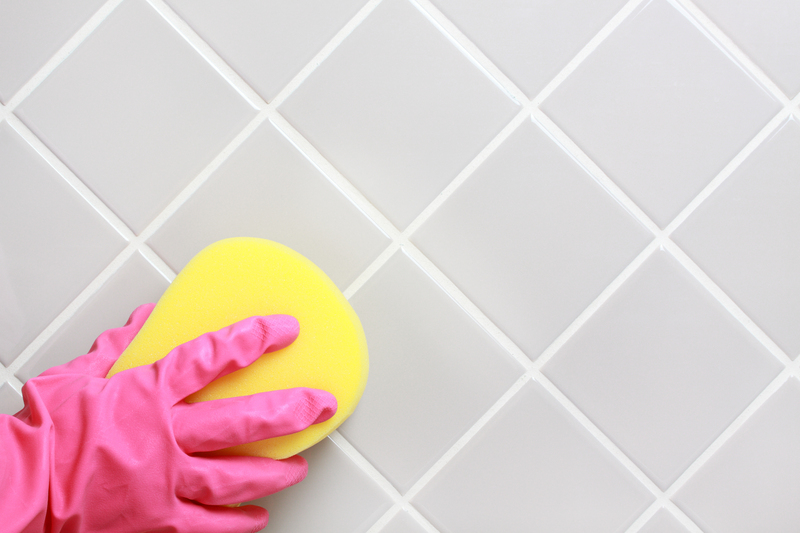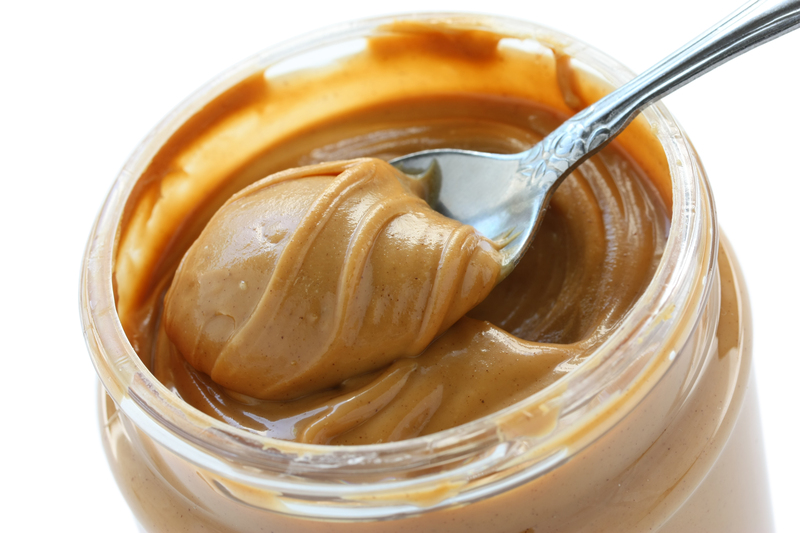Efficient Tips for a Pristine Stovetop Free of Burnt Residue
Posted on 18/05/2025
Efficient Tips for a Pristine Stovetop Free of Burnt Residue
A sparkling clean stovetop doesn't just make your kitchen look beautiful--it also creates a safer cooking environment and prolongs the life of your appliance. We've all experienced the frustration of stubborn, burnt-on residue that seems impossible to remove. Whether you're tackling the aftermath of a spilled pot or years of daily usage, these efficient tips for a pristine stovetop free of burnt residue will help you achieve spotless results. Discover eco-friendly cleaning methods, time-saving hacks, and expert advice to keep your stovetop immaculate!

Why a Clean Stovetop Matters
- Prevents Fire Hazards: Burnt-on residue and grease can ignite, so regular cleaning improves safety.
- Enhances Cooking Efficiency: A debris-free stovetop distributes heat evenly, leading to better meals.
- Prolongs Appliance Lifespan: Residue buildup can damage burners and grates over time.
- Improves Aesthetics: A clean stove complements your kitchen's appearance and hygienic standards.
Common Causes of Burnt-on Stovetop Residue
- Boil-overs from soups, sauces, or starches
- Drips from frying or sauteing
- Spilled sugar or caramelized foods
- Leaving food particles unattended on hot surfaces
- Unaddressed grease splatters
Step-By-Step Guide: How to Remove Burnt Stains from Your Stovetop
1. Gather the Right Cleaning Supplies
- Baking soda (a gentle abrasive for scrubbing)
- White vinegar (natural degreaser and sanitizer)
- Dish soap
- A soft sponge or microfiber cloth
- A plastic scraper or old credit card (for tough spots!)
- Paper towels or a clean, dry rag
- Optional: specialized stovetop cleaners
2. Pre-Clean and Cool Down
Never attempt to clean a hot stovetop! Always allow it to cool completely to avoid injury and prevent warping the parts.
- Remove grates, burner caps, and any removable knobs or rings.
- Wipe away any loose debris or crumbs with a dry cloth or paper towel.
3. Soak Removable Parts
- Fill a sink with hot, soapy water.
- Place grates, burner caps, and rings in the water to loosen caked-on messes.
- Let them soak while you work on the main stovetop surface.
4. Address Burnt-On Residue Efficiently
-
Baking Soda Paste: Mix three parts baking soda to one part water to create a spreadable paste.
- Apply generously over burnt areas.
- Let sit for 15-30 minutes--the baking soda lifts stains and neutralizes odors.
- White Vinegar Spray: Lightly mist stuck-on stains with vinegar. The fizzing reaction with baking soda helps break down stubborn residue.
- Use a plastic scraper or old credit card to gently remove loosened residue. Never use metal tools, as they can scratch your stovetop!
- For tougher spots: Place a hot, damp towel over the paste and let it steam for 15 minutes, then wipe and scrape.
5. Clean the Surface Thoroughly
- Use a soft, damp sponge and dish soap to clean the entire surface.
- Rinse with a clean, damp cloth to remove any residue from cleaners and scraped spots.
- Buff with a dry microfiber cloth for a streak-free shine.
6. Scrub and Rinse Removable Parts
- Take the grates, burner caps, and rings from the soaking solution.
- Scrub gently with a sponge or brush, focusing on burnt spots.
- Rinse thoroughly and allow to air dry completely before reassembling.
7. Polish and Deodorize (Optional)
- For a glossy finish, wipe the surface with a few drops of olive oil or a stovetop polish, then buff dry.
- To combat lingering odors, boil a pot of water with lemon juice on the stove after cleaning.
Specialized Tips for Different Stove Types
For Glass or Ceramic Stovetops
- NEVER use abrasive scouring pads or steel wool!
- Baking soda paste and a soft cloth are your best choices.
- Specialized glass stovetop cleaners can remove stains without scratching.
For Gas Stoves
- Use a needle or straightened paperclip to clear burner holes after cleaning.
- Make sure all parts are washed, dried, and reassembled correctly for safety.
For Electric Coil Stoves
- Gently lift and wipe under coils and in drip pans. (Always unplug before cleaning!)
- Drip pans can often be soaked and scrubbed, or replaced if heavily corroded.
DIY Solutions for Stubborn Burnt Stains
- Lemon and Salt Scrub: Sprinkle coarse salt over burnt areas, then rub with half a lemon. The acidity and abrasiveness help lift residue, leaving your stovetop refreshingly clean.
- Hydrogen Peroxide Paste: Mix baking soda with a few teaspoons of hydrogen peroxide for extra whitening power. Apply, let sit, and scrub gently.
- Commercial Degreasers: For truly stubborn stains, consider a stovetop-safe commercial degreaser. Always follow manufacturer instructions and test on a small area first.
Time-Saving Maintenance Tips to Keep Your Stovetop Spotless Every Day
- Act Fast: Wipe spills as soon as it's safe--don't let them harden!
- Weekly Wipe-downs: Even if you haven't cooked, dust and lint can settle on your stovetop.
- Use Splatter Guards: When frying or sauteing, use screens or lids to minimize mess.
- For baked-on residue, always soak or steam before scrubbing to avoid damaging the surface.
- Monthly Deep Cleans: Remove all parts and clean thoroughly, preventing hard-to-remove buildup.
- Avoid harsh chemicals or steel wool--these can leave scratches, discoloration, or toxic residues behind.
Eco-Friendly Stovetop Cleaning Hacks
- Baking Soda & Vinegar: This classic combo dissolves grease and lifts burns without toxic chemicals.
- Lemon Juice: Naturally antibacterial, deodorizing, and gentle on surfaces.
- Microfiber Cloths: Reduce waste from paper towels and clean more efficiently.
- Steam Clean: Place a damp rag on warm (not hot) residue, allowing steam to loosen grime without scrubbing.
FAQs about Pristine Stovetops and Burnt Residue Removal
-
Q: Can I use oven cleaner on my stovetop?
A: It's generally not recommended, as many oven cleaners can damage stovetop finishes, especially glass, ceramic, or painted surfaces. Use stovetop-specific cleaners for burnt residue instead. -
Q: What's the easiest way to prevent residue buildup?
A: Wipe up spills right after cooking, use liners (if safe for your model), and do a weekly light cleaning. -
Q: How often should I deep clean my stove?
A: Ideally once a month; more frequently if you cook daily or your stovetop sees heavy use. -
Q: Are there any stovetop parts I shouldn't put in the dishwasher?
A: Check your owner's manual--some grates, caps, or knobs may not be dishwasher safe, especially if enamel-coated or with nonstick finishes.

Pro Tips for a Stovetop Free of Burnt Residue Every Time
- Read your manual: Each stovetop model may have unique care requirements.
- Use the right tools: Soft sponges, microfiber cloths, and dedicated stovetop scrapers are best.
- Keep a small container of baking soda and a microfiber cloth handy on your counter for quick cleanups after each meal.
- For gas stoves, occasionally check and clear burner ports with a pin to prevent uneven flames and soot.
Final Thoughts: Enjoy Cooking on a Spotless Stovetop
By following these efficient tips for a pristine stovetop free of burnt residue, you can save time, minimize effort, and keep your kitchen shining. Consistent cleaning prevents stubborn buildup, enhances your cooking experience, and adds value to your home. Embrace these stovetop cleaning hacks, use eco-friendly solutions, and create a cleaning routine that suits your culinary lifestyle--your future self will thank you!
Ready to enjoy a sparkling stovetop every day? Share your own cleaning secrets, or try these expert-approved techniques and experience the difference for yourself!
```



 Sofa Cleaning
Sofa Cleaning
 Curtain Cleaning
Curtain Cleaning
 Office Cleaning
Office Cleaning